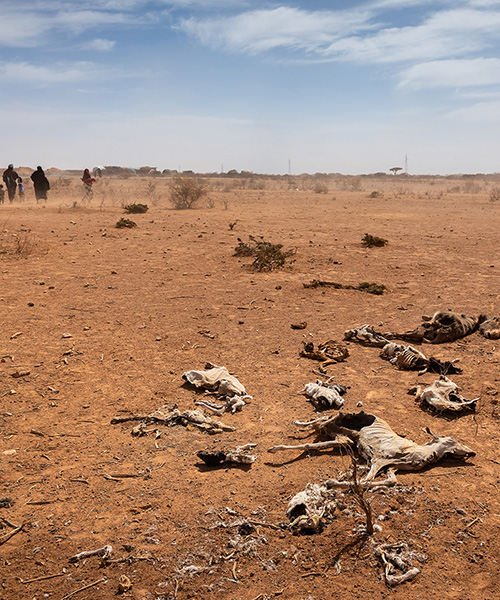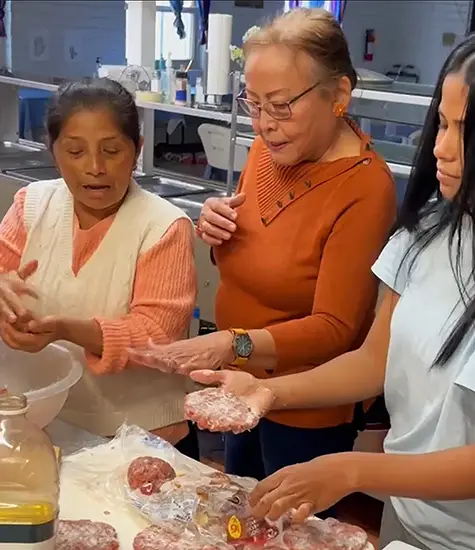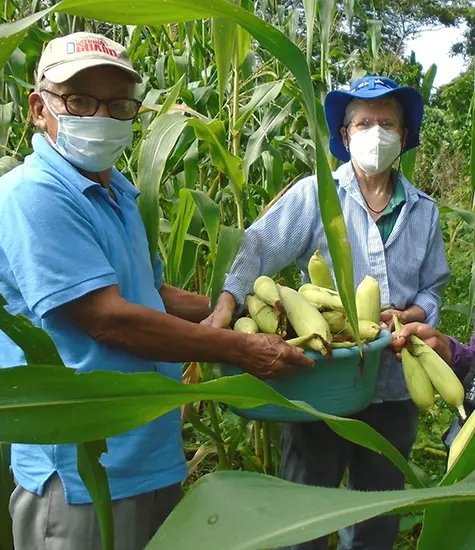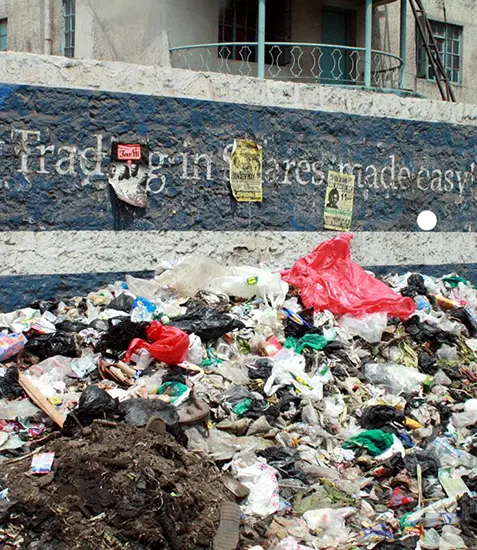Summer 2022 newsletter
Dee Dungy, Kenya

Women and children walk past animal carcasses in Sagalo in the Somali region of Ethiopia. The number of livestock dying of lack of food and water is staggering, and children and their families are struggling to survive due to loss of livelihoods. (Photo by Mulugeta Ayene, ©UNICEF Ethiopia/2022)
Most refugees who find their way to our Jesuit Refugee Service (JRS) compound in Nairobi are women and children in dire need of having their basic needs met. Unfortunately, we frequently are unable to fulfill their needs and refer them to our partnering organizations.
However, JRS is better equipped to help children and mothers with their mental health and psychosocial support (MHPSS) needs. The grief, trauma and profound pain they share with our staff echoes in our ears and hearts.
The women we encounter are in need and distress and often speak of their arduous journeys to escape conflict or to find food for their family’s daily survival at Kenya’s borders.
MHPSS is cross-cutting in all JRS programs and is integrated in my advocacy training and presentations about the welfare of refugees on the move. Raising awareness, generating healthier programming, and acknowledging our duty in facilitating pathways to mental wellness is paramount.
Here in East Africa, we are increasingly faced with multiple threats of climate-forced displacement. In order to respond adequately, societies in this region and elsewhere must adapt sustainable development planning to focus on the most vulnerable people. That involves protecting and restoring vitality to degraded environments, mitigating waste and strengthening the involvement of women in environmental decision-making at all levels and making relevant resources accessible to them.
Climate change has observable effects in Africa by creating stressors like deforestation, flooding, drought, soil erosion, coastal storms, locust invasion and shifting weather patterns that endanger ecological resilience. Climate change places increasing pressure on rural and urban areas and directly affects migration patterns as it thwarts crops, food production systems, and available water resources. (A recent segment of the PBS Newshour provides a good summary of the challenges in northern Kenya.)

Dryland in South Sudan (Photo by JRS)
According to a recent report, drylands occupy more than 750,000 square miles or respectively 90%, 75%, and 67% of Kenya, Tanzania and Ethiopia. The low level of precipitation and the high degree of variability in the region limits the possibilities for rainfed crop production. More than 60 million people — or 40% of these countries’ populations — live in drylands; and by 2025 this population is projected to increase to 90 million.
Protecting people on the move and reducing their vulnerabilities is an essential part of restoring dignity. Without urgent climate action, a World Bank report has projected, as many as 38.5 million people in East Africa could be internally displaced by the year 2050.
In Kenya, for example, people living around Mount Kenya have noticed that the snowcaps on the mountain have almost disappeared. This means less water will be available for farming and other agricultural uses, as well as for downstream cities and urban areas. As a result, Kenyan women may need to walk additional miles in search of water for domestic use. People living around Mount Kilimanjaro in Tanzania are facing similar problems.
As rainy seasons are shorter — there has been a 35% decline in total rainfall over the last two decades — climate change has made farming and herding less feasible. As a result, because they lack other options, some women have had to turn to survival sex work.

Like this woman in Ethiopia, women throughout East Africa spend many hours a week fetching safe water for their families. (Photo by dMz. Pixabay)
Women suffer disproportionally from the impacts of climate change. They are frequently the ones responsible for securing safe water, food and energy for cooking and heating. Many women walk long distances to fetch drinking, cooking and washing water, which is physically exhausting and can take up 20 hours or more a week. With minimal access to information and limited mobility outside their homes, women are 14 times more likely than men to die during natural disasters. Though they have a close connection to the environment they have few ownership rights, and rarely are titled landholders.
Environmental protection, and consequently sustainable development, require that both women and men be actively involved, including through daily activities aimed at preserving natural resources and through participation in local and high-level environmental decision-making. Moreover, as emphasized in the 1995 Beijing Platform for Action, the involvement of women in environmental decision-making at all levels is a key step to ensuring that women’s issues and gender perspectives on the environment are included in policymaking from the local to national and global levels.
The United Nations’ Sustainable Development Goal 5 focuses on gender equality and empowering women. Promoting gender equality not only promotes the achievement of this goal but is also highly relevant for strengthening climate resilience.
While the 2015 Paris Agreement on climate change sets forth ambitious efforts, several of its articles fall short in leaving vulnerable groups behind — especially women and girls.
Gender blindness or not leveraging gender-responsiveness in a balanced way during the implementation process may amplify gender inequalities, roles and relationships, perpetuating inequity between men and women.
Given the growing urgency of climate-forced displacement in East Africa and the paramount importance of including a gender-equity perspective in our advocacy work, I advocate for safeguarding the vulnerable, particularly women and children, by improving women’s capacities and knowledge in programming and by promoting their voices and agency in policies or position papers at conferences. Despite the protractedness of their grief over displacement and loss, over time, they become resilient. This encourages and spurs me to push for policy changes and for their equitable access to resources in our programming.
Please consider making a special gift to Maryknoll Lay Missioners’ “Walk With Us” campaign, which raises money for the recruitment, training and ongoing support of all of us lay missioners. We can only “walk with” the people here because you are “walking with” us. Thanks to matching gifts, every $100 given to the campaign in effect becomes $150. To donate ONLINE, click the “Walk With Us” button below. Thank you so much for your generosity!









